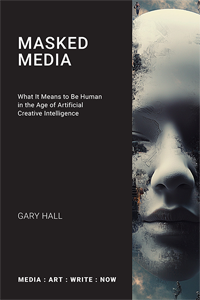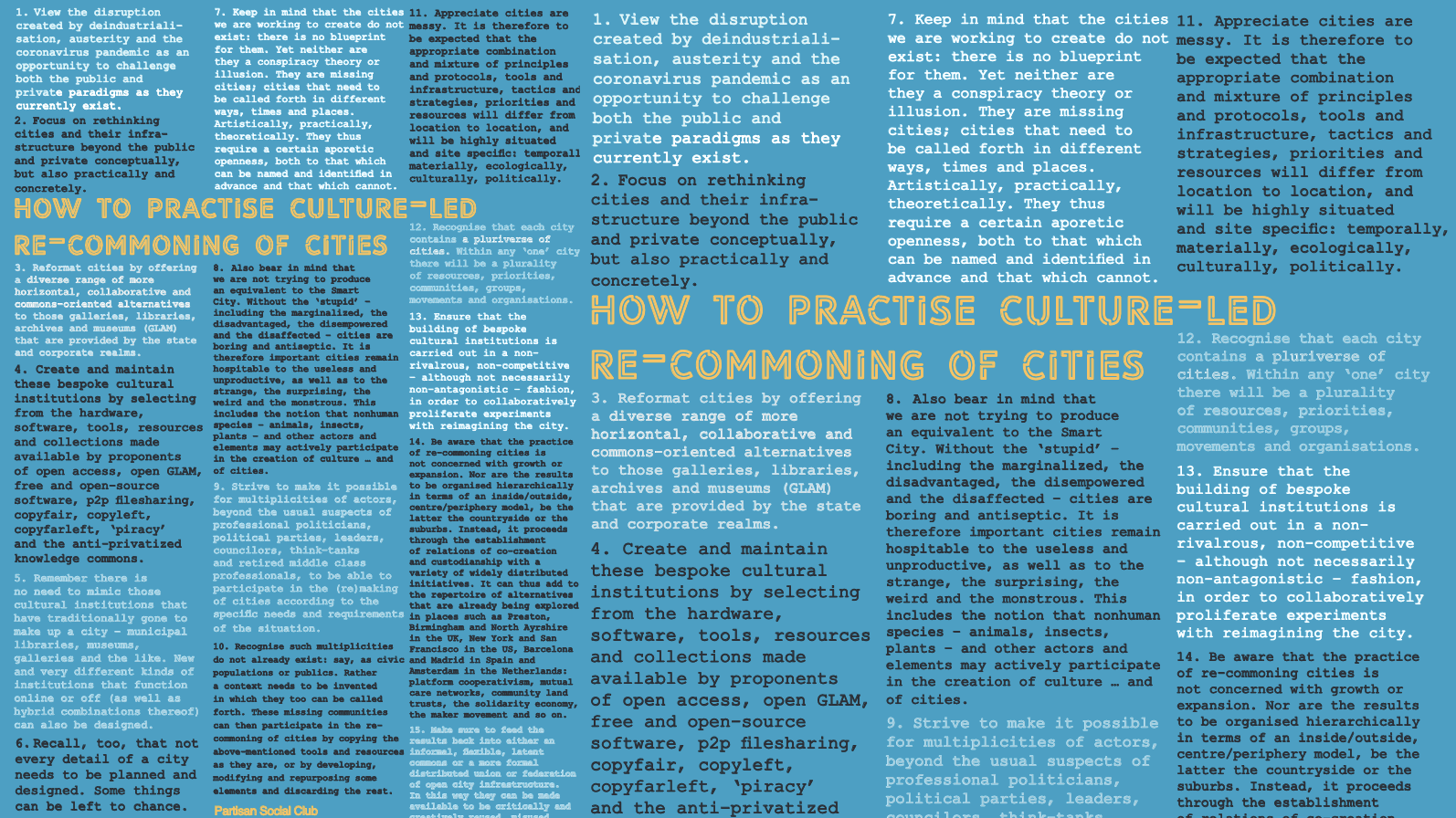The Commons vs Creative Commons Conclusion: Commoner Is Not An Identity
 Monday, October 20, 2025 at 1:35PM
Monday, October 20, 2025 at 1:35PM This is the final part of an initial 5,000 word draft of a specially commissioned piece on the commons and Creative Commons. It’s for an open-access online glossary on the contemporary condition and near future that's being produced by the Chinese Academy of Art.
Contents:
I: Introduction * Conceptual Overview * Elinor Ostrom and the Tragedy of the Commons * Liberal Commons * Radical Left Commons * From Capitalism to Postcapitalism – and Back Again
II: The Undercommons * Latent Commons * Uncommons * The Unknown Common * Common Misunderstanding No.1: The Commons is Not Inherently Left-wing
III: Creative Commons * CC and AI * Common Misunderstanding No.2: Creative Commons is Not a Commons * The Commons and Creative Commons: Some Distinctions * Alternatives to Creative Commons
IV: Conclusion: Common Misunderstanding No.3: Commoner is Not an Identity * Common Misunderstanding No.4: There is Not One Commons
---
Conclusion
Two further common misunderstandings about the commons are worth mentioning.
Common Misunderstanding No.3: Commoner is Not an Identity
The Commons, for some, is actually a noun not a verb. The emphasis here is less on understanding the commons in terms of shared assets – or even as a particular kind of community, style of collective life, place or space – and more on conceiving the commons as a practice. This is why they prefer to think in terms of commoning rather than commons: to highlight its processual and performative nature. It is an approach evident in many accounts of the radical commons and the emphasis placed there on commoning: the ongoing generative social practices through which both the commons and the community of commoners are invented, constituted and sustained. Balser and de la Cadena’s description of the uncommons as “a commons that would be a continuous achievement” – not a fixed goal or final endpoint but a permanent becoming – also deserves to be highlighted in this context (2018, 19).
So, too, does the process-oriented account of the commons provided by Stavros Stavrides. When community formation is directed toward generating shared space and purpose – the common – it must be understood as open-ended and constantly evolving, Stavrides insists. This is because the commons does not exist as a stable, pre-existing reality to be seized and held on to. Nor are commoners defined by fixed identities that exist prior to their taking part in the living process that is commoning. On the contrary, both emerge through – and are only born in – the act of commoning. This orientation carries important implications. For one thing, it displaces the idea that community membership depends on a shared, pre-given identity held in common. Instead, the identities of the commoners are formed in and through the practices of sharing and participation in the commons. For another, belonging is understood as a matter of action rather than origin. Those who take part in commoning become members of a community that itself comes into existence through those very acts (Stavrides 2022, 26–27).
Common Misunderstanding No.4: There is Not One Commons
Although many people refer to “the commons” as if its meaning were self-evident, without need of further clarification or explanation, there is no single, universally-agreed upon idea of the commons. Nor is there a one-size-fits-all model for how commons are organised or function. “Every instance of collaboration makes room for some and leaves out others,” Tsing says of the latent commons (255). Meanwhile, David Harvey notes how “good solutions at one scale (the ‘local,’ say) do not necessarily … make for good solutions at another scale (the global, for example).” As a result, issues concerning the commons are “contradictory and therefore always contested” (2012, 69-71). Even among advocates there is no shared understanding of the commons. Ironically, this is not something they have in common.
Moreover, commons themselves are not inherently harmonious or homogeneous. For all their mutual bonds, participants in a commons can differ in important ways. The relationships that connect them may be shaped as much by division and divergence as by solidarity and collective interest. These relationships, too, may be something commoners do not have in common.
Along with the difficulty of managing a participatory and non-hierarchical commons across a variety of scales, not just the small and local, this ultimate lack of cohesion and shared purpose may explain why a commons-based movement or collective political subject large enough to meaningfully challenge, let alone replace, capitalism and its methods of organising resources and labour has yet to emerge. At the same time, this may be just what the commons and commoning is. Rather than being a single, self-identical concept, “the commons” is better understood as a dynamic site where a rich diversity of individuals, groups, communities, movements, organizations, initiatives and practices – each with distinct needs and interests regarding the use, management, reproduction, exchange and distribution of natural and cultural resources – intersect, but remain in tension.
 Gary Hall | Comments Off |
Gary Hall | Comments Off | 





